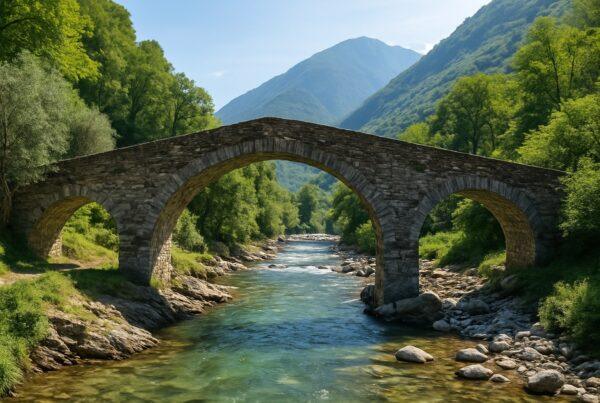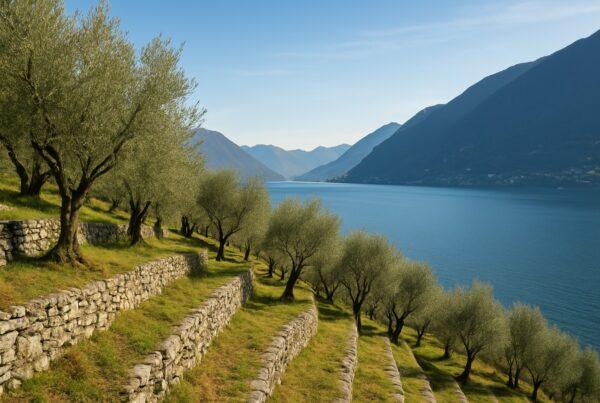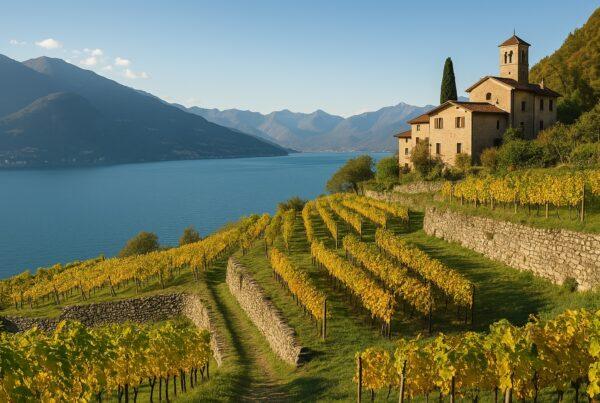Autumn on Lake Como is not only about reflections of gold on the water or the elegance of villas surrounded by falling leaves. It is also a season that belongs to the valleys, where chestnut trees have ruled for centuries. To walk under their branches is to enter another rhythm, slower and deeper, where history and nature intertwine. Forgotten valleys, shaded by chestnut groves, hold memories of a time when these trees were the very foundation of life.
The chestnut: bread of the mountains
For generations, chestnut trees were called the “bread of the poor.” In valleys too steep for wheat or too cold for vineyards, chestnuts provided nourishment that was both abundant and versatile. Ground into flour, roasted in fire, boiled into soups, or stored for winter, chestnuts were more than a fruit—they were survival. Families relied on them through harsh winters, and entire communities organized their calendars around their harvest.
Around Lake Como, from the Val Senagra above Menaggio to the Valle Albano near Gravedona, chestnut groves formed a vital resource. These were not wild forests but carefully cultivated landscapes. Each family had rights to particular groves, each tree tended with care, and the fruit collected in woven baskets.
Forgotten traditions
Linked to the chestnut harvest were traditions now largely forgotten. Children once climbed trees to shake down the spiny husks, while elders collected and sorted the nuts. The harvest was often followed by gatherings around the metato, the small stone building where chestnuts were dried over a slow fire for weeks, filling the air with a sweet, smoky aroma.
In many villages, the arrival of the first chestnut flour was celebrated with simple but symbolic dishes—castagnaccio baked with pine nuts and rosemary, or polenta made entirely from chestnut flour. These flavors survive in memory and in a few dedicated kitchens, but the atmosphere of those long autumn evenings has faded, leaving only echoes in the forgotten valleys.
Landscapes of autumn
Walking under chestnut trees in autumn is to walk through a living mosaic. The leaves, broad and serrated, turn shades of bronze, ochre, and deep gold, carpeting paths with rustling layers. Sunlight filters through the branches, scattering warm patterns on old stone walls and quiet trails. The air carries a mix of damp earth and wood smoke, a fragrance that seems to belong to another era.
Along these paths, time feels suspended. Villages half-abandoned lie hidden among the trees, with roofless barns and moss-covered walls telling stories of migration and change. Once, these valleys were full of life; now, silence reigns, broken only by the call of a bird or the crack of a chestnut falling to the ground.
Walks into forgotten valleys
Some of the most evocative autumn walks around Lake Como lead through chestnut groves. In the Val Senagra, a protected area near Menaggio, paths follow old mule tracks through dense chestnut woods, passing ruins of mills and farms. The sound of the Senagra stream accompanies the walk, its waters once used to power forges and presses.
In the Valle d’Intelvi, between the two arms of the lake, chestnut forests cloak the hills. From here, trails lead to panoramic ridges where the lake appears suddenly, framed by golden leaves. This valley, once a corridor for smugglers and traders, now invites slow exploration.
Further north, above Gravedona, the Valle Albano offers solitude and authenticity. The path climbs through chestnut woods toward small hamlets where time seems to have stopped. Old washhouses, tiny chapels, and terraces reveal layers of history. The chestnuts here still feed local festivals each October, when villagers gather to roast them in great pans and share stories around bonfires.
Even more remote are the woods near Livo and Dosso del Liro, where trails snake through silent groves untouched by tourism. Here, one feels the presence of the chestnut as guardian of memory, shading paths that lead to hidden mountain pastures and stone houses left behind by families who sought work elsewhere.
Traditions that survive
Though many customs have faded, autumn festivals keep the memory alive. In towns like Bellano, Garzeno, and Ossuccio, chestnut feasts fill squares with the smell of roasting nuts. Long tables welcome locals and visitors alike, with dishes that range from roasted chestnuts and mulled wine to gnocchi and cakes made with chestnut flour.
These gatherings are more than culinary events: they are acts of preservation, reminding new generations of the tree that once sustained their ancestors. Even the vocabulary lingers—old words for chestnut tools, varieties, and practices are still heard from elders who remember the work of their youth.
A tree of resilience and identity
The chestnut tree is not only useful but symbolic. It represents resilience, having fed communities through famine and war. Its roots hold steep slopes against erosion, its wood built houses and furniture, and its fruit offered sustenance when nothing else could. To walk under its branches is to walk in the shade of endurance.
Around Lake Como, chestnuts also carry identity. They are part of the cultural DNA of the valleys, connecting present to past. Even as groves are abandoned, their presence endures, whispering stories of survival and belonging. For those who seek authenticity, following these paths is to listen to the voice of the land itself.
Poetry of the forgotten valleys
As the day shortens and mist rises in the valleys, chestnut groves take on a mystical quality. The last rays of the sun catch on golden leaves, streams murmur in shadow, and the silence feels almost sacred. Walking here is less about destination than about immersion, about sensing the continuity between nature and culture.
In forgotten valleys, chestnut trees stand as living monuments. They may no longer feed entire populations, but they still feed memory, beauty, and imagination. Under their branches, autumn reveals its deepest voice: one of resilience, tradition, and quiet wonder.




